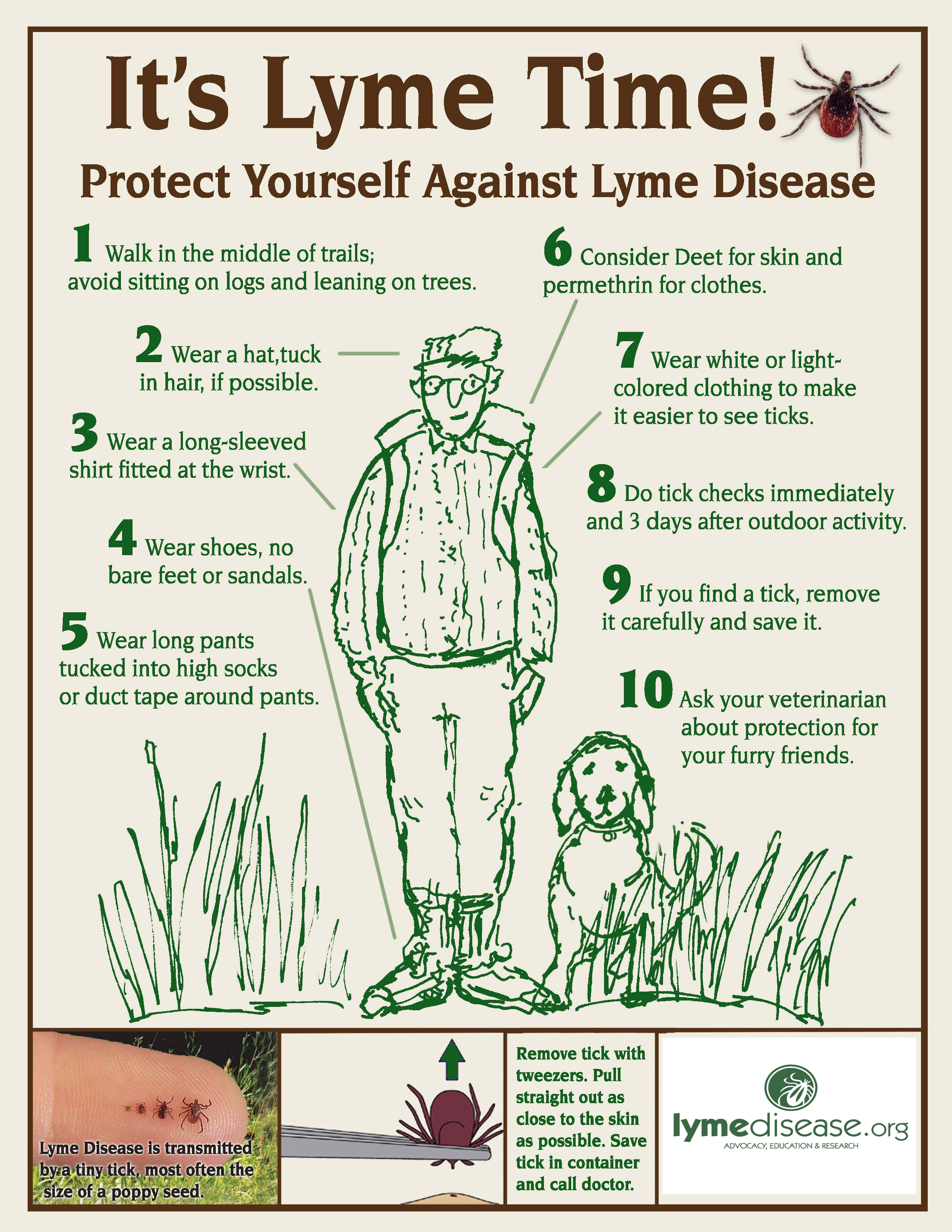 Any visitors to local parks need to be especially aware of the safety concerns that deer ticks pose to human health. Studies have shown that summer months pose the highest risk for tick bites and contracting diseases. The rates of disease have been increasing each year in the state of Maryland as well as across the country. It is important to put safety first and take preventative measures that will keep you and your family safe.
Any visitors to local parks need to be especially aware of the safety concerns that deer ticks pose to human health. Studies have shown that summer months pose the highest risk for tick bites and contracting diseases. The rates of disease have been increasing each year in the state of Maryland as well as across the country. It is important to put safety first and take preventative measures that will keep you and your family safe.
Good Practices to
Prevent Tick Problems
Recommended for anyone visiting parks in the region - or even their back yards - if there are deer.
- when outdoors, wear light-colored clothes so that ticks will be more noticeable
- wear long-sleeved shirts, pants, a hat, and closed-toe shoes
- tuck your shirt into your pants and your pants into your socks
- consider using insect repellents such as deet or lemon eucalyptus on your clothes (don't put deet on babies)
- consider using permethrin on clothes especially socks and shoes and pants to kill the ticks (Use extreme care and follow instructions as it is a neurotoxin)
- avoid brushing up against plants if possible
- after spending time outdoors, ticks may linger on clothing; make sure to send your clothes through the dryer to ensure ticks don't crawl on to home surfaces and bite anyone unexpectedly
- check your entire body for ticks and tick bites as soon as possible. Tick bites sometimes itch like a mosquito bite. They may appear to look like a mole and can be easily missed. Ticks range in size from the size of a period to several millimeters in size.
- remove ticks with tweezers, grasping as close to the tick's mouthparts as possible. Do not attempt to use other methods as the tick may release its stomach contents and bacteria into your skin.
- should you find a tick that you suspect has been attached for 24 hours or more call a doctor immediately. You should be prescribed 3-7 days of antibiotics as a preventive measure to avoid infection.
Lyme Disease is not the only infection carried by ticks in the area. Other diseases that are known to be carried by ticks in Maryland include Babesiosis, Bartonellosis, Ehrlichiosis, and Rocky Mountain Spotted Fever.
Lyme Disease Warning Signs
There are several symptoms that people should be concerned about after visiting wooded areas that may expose them to ticks. If you experience any of the following warning symptoms, you should see a doctor as soon as possible and get treatment:
- an unusual rash, called the "bulls-eye rash", around the area of a tick bite. This rash does not occur in all cases, so other symptoms are just as important to look out for.
- headaches
- mild aches and pains
- fever
- mild flu-like symptoms
Resources
- Learn about the correlation between alien weeds and deer ticks log versus reduced risk in healthy areas with native plants and animals by Stewardship Outings intern Nick Yoder (June 21, 2016).
- Check out this Article some specific invasive plants that harbor deer ticks from the MD Invasive Species Council http://mdinvasives.org/iotm/may-2018/ by Marc Imlay (May 2018)
- Listen to Kojo Nnamde's NPR interview with local experts on ticks and Lyme Disease (July 3, 2019).
- Print and hand out this brochure about the correlation between lyme disease, deer ticks, deer overpopulation, control of invasive weeds, how to protect yourself, and how join in the efforts to protect natural habitats, native plants and animals. Created by Outings interns Mary Schaefer, Katie Holmes, Annika Leiby, and Alex Reardon (July 2017)
- Update on Lyme Disease Vaccine by Stewardship Outings Intern Ariel Plotnik (June 2018)
- NPS Poster "Warning: You are in a High Risk Area for Lyme Disease" https://www.nps.gov/mana/planyourvisit/upload/Lyme-Disease-Poster-NPS.pdf
- CDC poster 2009
Visit websites
- Tick-Borne Diseases (from U.S. Centers for Disease Control and Prevention)
- DEET, Showers, and Tick Checks Can Stop Ticks (from U.S. Centers for Disease Control and Prevention)
- National Capital Lyme Disease Association
- Lyme Disease Prevention (from the National Capital Lyme Disease Association)
- US Department of Health and Human Services
Related Pages
https://www.sierraclub.org/maryland/protect-natural-heritage
https://www.sierraclub.org/maryland/land-preservation-tool-kit
https://www.sierraclub.org/maryland/suburban-deer-management
https://www.sierraclub.org/maryland/invasive-species-corner
https://www.sierraclub.org/maryland/getting-outdoors-safely
https://www.sierraclub.org/maryland/get-outdoors